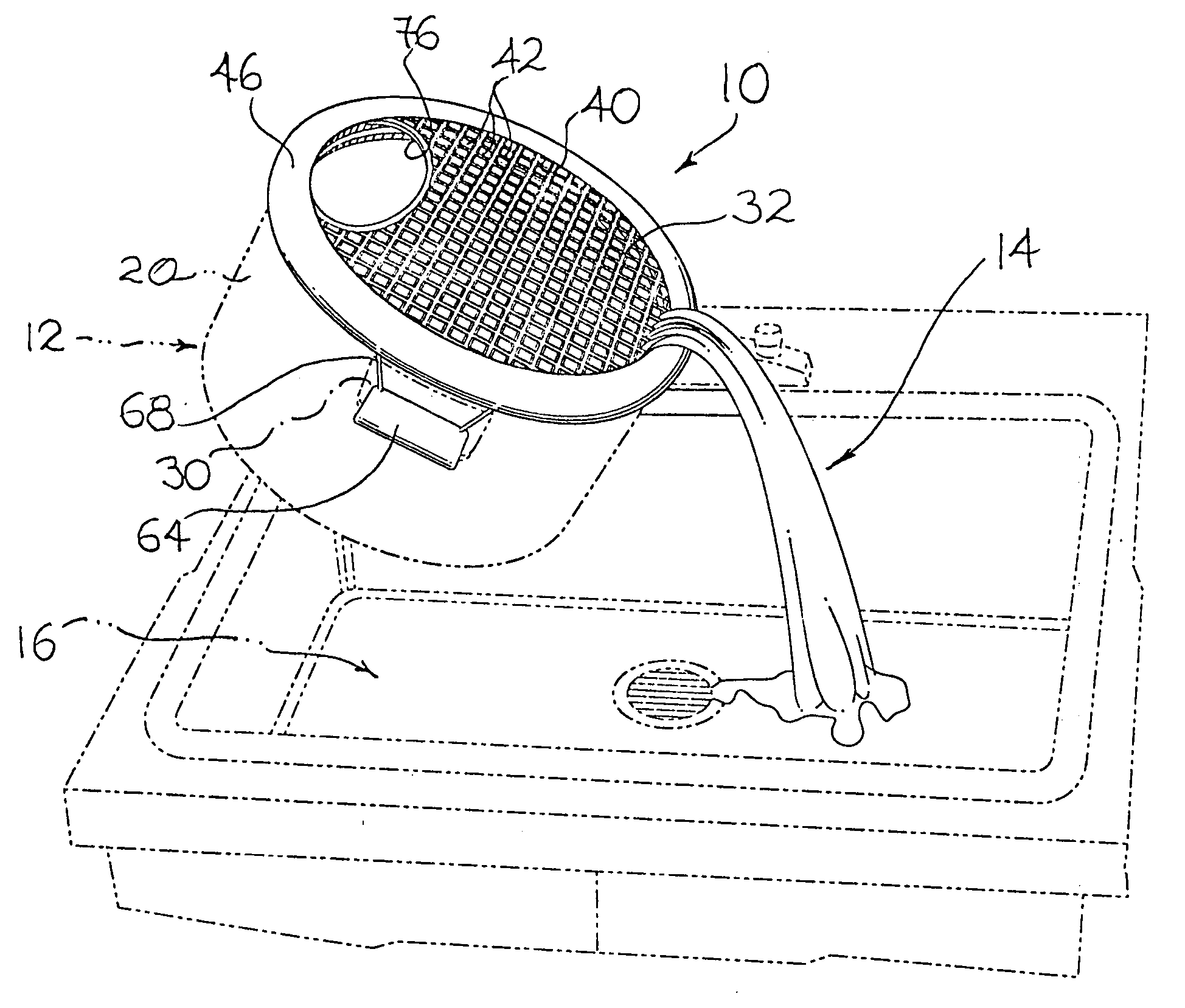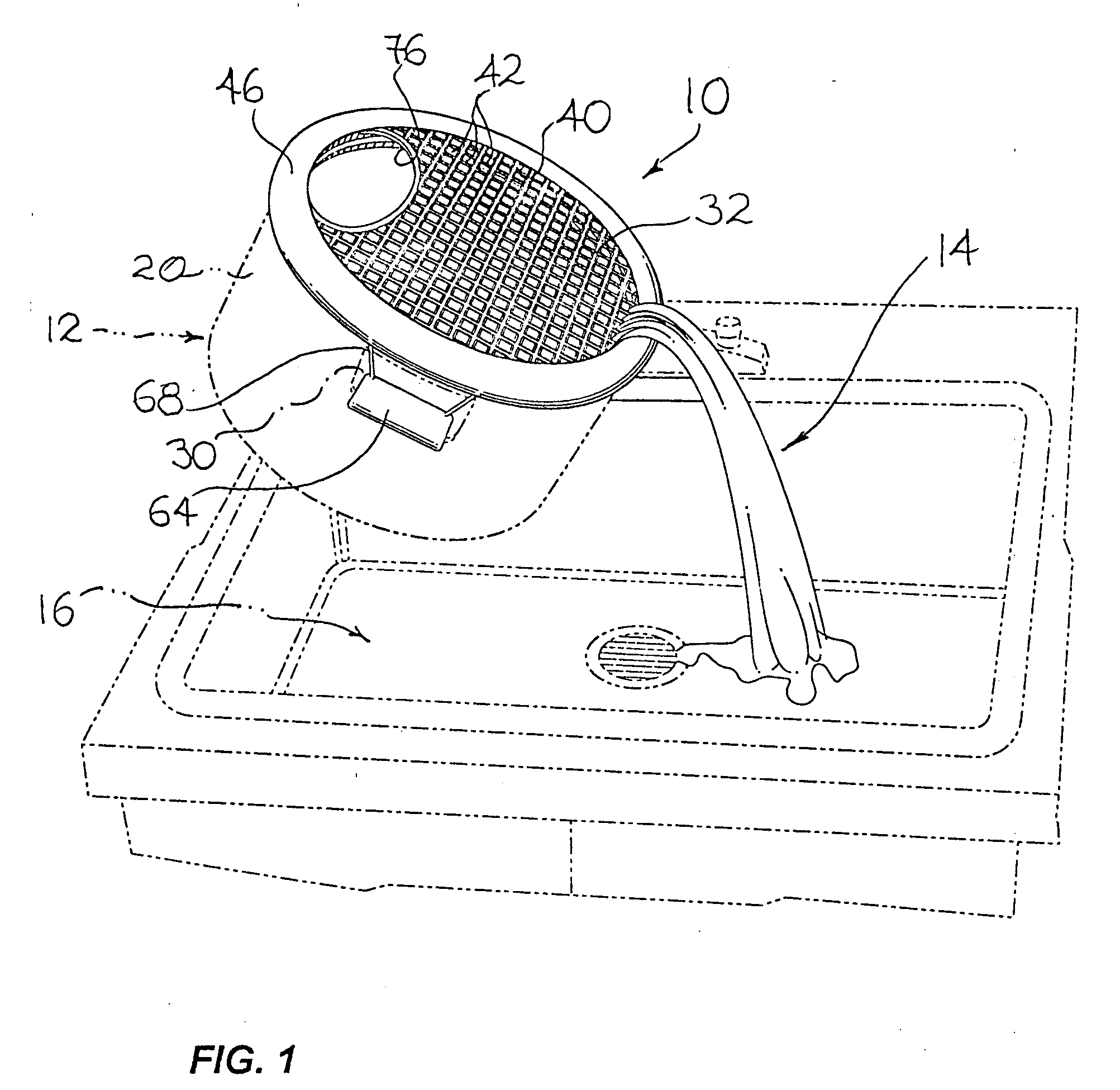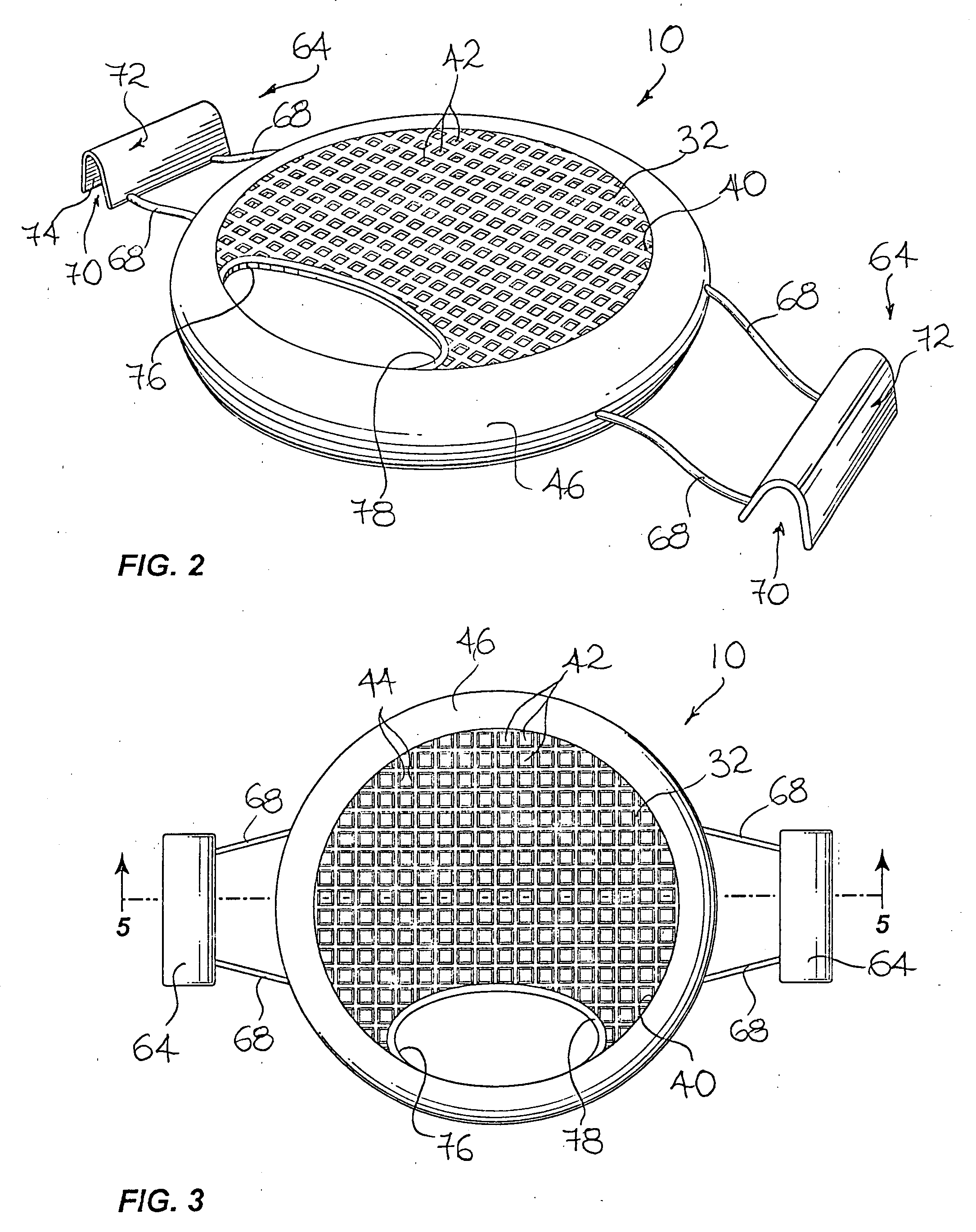Deformable strainer
a strainer and strainer technology, applied in the field of food preparation implements, can solve the problems of user dropping the cooking vessel or its contents, hot steam typically rising from the cooking vessel, affecting the quality of food, etc., and reducing the risk of injuries to the user, preventing involuntary removal of food, and increasing the frictional force
- Summary
- Abstract
- Description
- Claims
- Application Information
AI Technical Summary
Benefits of technology
Problems solved by technology
Method used
Image
Examples
Embodiment Construction
[0038] Referring to FIG. 1, there is shown a strainer in accordance with an embodiment of the present invention, generally indicated by the reference numeral 10. The strainer 10 is shown mounted on a conventional cooking vessel generally indicated by the reference numeral 12. It should be understood that although FIG. 1 illustrates the strainer 10 mounted, by way of example, on a conventional boiling pot-type cooking vessel, the strainer 10 could be used on any other suitable type of vessels including any other suitable cooking vessels such as pots, pans, or the like of various sizes and configurations without departing from the scope of the present invention.
[0039] In FIG. 1, the strainer 10 is shown straining a liquid from a solid. The liquid, generally indicated by the reference numeral 14, is shown being poured out of the cooking vessel 12 through the strainer 10 into a sink, generally indicated by the reference numeral 16. It should, however, be understood that the strainer 10...
PUM
| Property | Measurement | Unit |
|---|---|---|
| frictional force | aaaaa | aaaaa |
| stretchable | aaaaa | aaaaa |
| compressive force | aaaaa | aaaaa |
Abstract
Description
Claims
Application Information
 Login to View More
Login to View More - R&D
- Intellectual Property
- Life Sciences
- Materials
- Tech Scout
- Unparalleled Data Quality
- Higher Quality Content
- 60% Fewer Hallucinations
Browse by: Latest US Patents, China's latest patents, Technical Efficacy Thesaurus, Application Domain, Technology Topic, Popular Technical Reports.
© 2025 PatSnap. All rights reserved.Legal|Privacy policy|Modern Slavery Act Transparency Statement|Sitemap|About US| Contact US: help@patsnap.com



